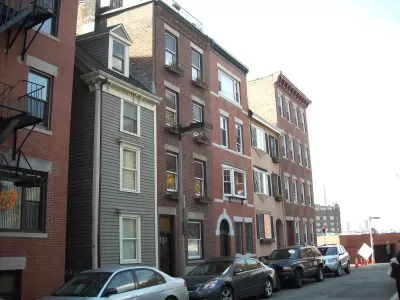A major for-profit affordable housing provider hasn't evicted a single tenant since early 2020. How did the company do it, and can its method be a model for other developers?

Tenants’ rights attorney Jay Rose spent four-plus decades waging legal battles on behalf of poor folks. So taking a job as a legal consultant for the nation’s largest for-profit affordable housing landlord might seem an odd choice. But executives at Boston-based WinnCompanies—which manages approximately $14 billion worth of largely affordable and military housing in 550 developments across 22 states—recently learned an unpleasant fact and knew the organization needed help from someone like Rose.
In 2018 WinnCompanies and other large Boston-area property managers were invited to join a newly formed Eviction Prevention Task Force, run by the Office of Housing Stability within Boston’s Department of Neighborhood Development. The group used company-provided information from 2015 through 2017 and data from the local housing court system to determine which landlords were doing the most evicting.
WinnCompanies learned it was the largest landlord in the city of Boston and, “we were also responsible for a fairly high rate of evictions in the city, and that’s not something we expected,” says Trevor Samios, senior vice president of Connected Communities, WinnCompanies’ resident services department. “It wasn’t a list we wanted to be on.”
The company hadn’t previously tracked its own eviction rates or reasons for evicting, which is typical; most landlords don’t. Even at the government level, one-third of U.S. counties don’t publish yearly eviction information, and there’s no federal government tracking. Samios did provide Shelterforce with some information he called his “back of the napkin” figures: WinnCompanies manages 7,304 affordable units in Boston. From 2015 to 2017, the company filed 1,178 eviction cases; 374 of those were executed.
The City of Boston wasn’t the only local government starting to ask questions around that time, Samios says; other jurisdictions were also searching for solutions to their own affordable housing crises and high eviction rates. So when Rose approached WinnCompanies with a plan in 2019, company executives decided to accept his offer to help them overhaul the company’s policies and processes.
Rose, who spent several years at Greater Boston Legal Services, poured his “pet peeves of the last 40 years” into the partnership, he says. The result, called the Housing Stability Program, “is me trying to get a major owner to be as tenant-friendly as possible,” Rose says, and it should save the company money.
The Nine Steps of Housing Stability
WinnCompanies wanted to cut its eviction rates by 50 percent within five years. Rose wanted to keep tenants from seeing the inside of a courthouse. To achieve both those goals, WinnCompanies’ has ...
FULL STORY: How One of Boston's Top Evictors Changed Its Ways

Trump Administration Could Effectively End Housing Voucher Program
Federal officials are eyeing major cuts to the Section 8 program that helps millions of low-income households pay rent.

Planetizen Federal Action Tracker
A weekly monitor of how Trump’s orders and actions are impacting planners and planning in America.

Ken Jennings Launches Transit Web Series
The Jeopardy champ wants you to ride public transit.

Crime Continues to Drop on Philly, San Francisco Transit Systems
SEPTA and BART both saw significant declines in violent crime in the first quarter of 2025.

How South LA Green Spaces Power Community Health and Hope
Green spaces like South L.A. Wetlands Park are helping South Los Angeles residents promote healthy lifestyles, build community, and advocate for improvements that reflect local needs in historically underserved neighborhoods.

Sacramento Plans ‘Quick-Build’ Road Safety Projects
The city wants to accelerate small-scale safety improvements that use low-cost equipment to make an impact at dangerous intersections.
Urban Design for Planners 1: Software Tools
This six-course series explores essential urban design concepts using open source software and equips planners with the tools they need to participate fully in the urban design process.
Planning for Universal Design
Learn the tools for implementing Universal Design in planning regulations.
Heyer Gruel & Associates PA
Ada County Highway District
Institute for Housing and Urban Development Studies (IHS)
City of Grandview
Harvard GSD Executive Education
Toledo-Lucas County Plan Commissions
Salt Lake City
NYU Wagner Graduate School of Public Service





























